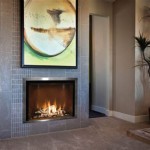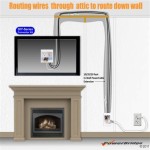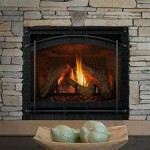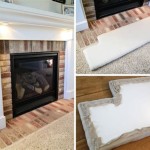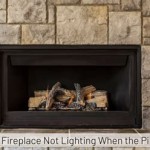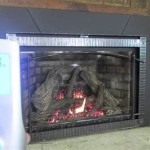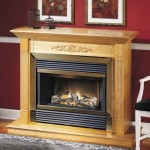Understanding Gas Fireplace Insert Blower Motors
Gas fireplace inserts offer a convenient and efficient way to heat a home, often providing a more controllable and cleaner burning alternative to traditional wood-burning fireplaces. A key component of many gas fireplace inserts is the blower motor. This seemingly simple device plays a crucial role in maximizing the heating potential of the insert and distributing warmth effectively throughout a room.
Without a blower, a gas fireplace insert primarily radiates heat directly outwards. This concentrated heat can be uncomfortable for those nearby and leaves the majority of the room relatively untouched by the warmth. The blower motor addresses this issue by forcing air across the heated firebox, collecting the warmth, and pushing it out into the room. This process creates a convective heating effect, allowing the warm air to circulate more evenly and heat a larger space.
The effectiveness of a gas fireplace insert is intrinsically linked to the performance of its blower motor. A well-functioning blower helps to ensure consistent and comfortable heating, while a failing or inadequate blower can significantly diminish the insert's heating capabilities. Therefore, understanding the function, types, maintenance, and potential issues associated with gas fireplace insert blower motors is crucial for maximizing the benefits of this heating appliance.
Functionality of the Blower Motor
The primary function of a gas fireplace insert blower motor is to enhance the heat distribution generated by the fireplace. It achieves this by drawing cooler air from the room, typically from near the floor where cooler air tends to settle, and passing it over the heated surfaces of the firebox. The firebox, constructed from materials like cast iron or steel, becomes extremely hot during operation of the gas fireplace. As the air travels through this heated area, it absorbs the heat energy. The blower motor then propels this warmed air out of the insert and into the room, creating a cyclical flow of heat.
The blower motor's operation is usually controlled by a thermostat or a variable speed control. Thermostats automatically activate the blower when the firebox reaches a certain temperature, ensuring that the blower only runs when there is sufficient heat to distribute. Variable speed controls allow users to manually adjust the airflow, providing greater control over the heating output and the noise level of the blower. This allows optimizing comfort levels based on individual needs and room size.
The benefits of this forced-air system are numerous. Firstly, it significantly improves the heating efficiency of the fireplace insert. Without the blower, much of the heat would simply rise and be lost to the ceiling, providing limited benefit to the occupied space. The blower directs the heat outwards, warming the entire room more effectively. Secondly, it promotes a more even distribution of heat, eliminating hot spots near the fireplace and cold spots further away. This even heating creates a more comfortable and consistent temperature throughout the room.
Furthermore, the blower motor can help to reduce the surface temperature of the fireplace insert itself. By constantly drawing heat away from the firebox, the exterior surfaces remain cooler, reducing the risk of accidental burns. This is particularly important in homes with children or pets. The use of a blower motor also allows the fireplace insert to heat a larger area than it could otherwise, making it a more practical heating solution for larger rooms or open-plan living spaces.
Types of Blower Motors Used in Gas Fireplace Inserts
Different types of blower motors are used in gas fireplace inserts, each with its own advantages and disadvantages. The selection of a particular motor typically depends on the size and design of the fireplace insert, the desired airflow, and the noise level. Common types include centrifugal blowers (also known as squirrel cage blowers), tangential blowers (also known as crossflow blowers), and, less frequently, axial fans.
Centrifugal blowers are perhaps the most common type found in gas fireplace inserts. These blowers use a rotating impeller with curved blades to draw air in and then expel it outwards at a right angle. They are known for their ability to deliver a relatively high airflow at a moderate pressure, making them suitable for efficiently distributing heat throughout a room. Centrifugal blowers are generally robust and reliable, but they can be somewhat noisier than other types, especially at higher speeds. The noise is often described as a whirring or rushing sound.
Tangential blowers, also known as crossflow blowers, feature a long, cylindrical impeller that spans the width of the blower housing. Air is drawn in along one side of the impeller and then forced out along the opposite side, creating a uniform airflow across a wide area. Tangential blowers are known for their quiet operation and their ability to distribute air evenly. They are often preferred in applications where noise is a concern, such as bedrooms or living rooms. However, they typically produce a lower airflow than centrifugal blowers and may not be suitable for larger fireplace inserts or rooms.
Axial fans, while less common in gas fireplace inserts, use a propeller-like blade to draw air in and expel it in the same direction. They are generally compact and inexpensive, but they produce a lower pressure and airflow compared to centrifugal and tangential blowers. Axial fans are typically used in smaller fireplace inserts or as supplementary cooling fans. The choice of blower type depends on the specific requirements of the fireplace insert and the user's preferences. Factors to consider include airflow, noise level, energy efficiency, and lifespan. Consulting with a qualified technician can help in selecting the most appropriate blower motor for a particular application.
Troubleshooting and Maintenance of Blower Motors
Like any mechanical component, gas fireplace insert blower motors can experience problems over time. Regular maintenance and timely troubleshooting can help to extend the lifespan of the blower and ensure optimal performance. Common issues include excessive noise, reduced airflow, overheating, and complete failure of the motor.
Excessive noise is a common complaint associated with blower motors. This can be caused by several factors, including loose mounting hardware, worn bearings, or a buildup of dust and debris. Regularly inspecting and tightening all mounting hardware can help to reduce vibrations and noise. Lubricating the motor bearings, if accessible, can also help to quiet down a noisy blower. Cleaning the blower blades and surrounding areas to remove dust and debris can improve airflow and reduce noise caused by imbalances.
Reduced airflow can be caused by a clogged air intake, a dirty blower wheel, or a failing motor. Regularly cleaning the air intake to remove dust, pet hair, and other debris can help to maintain optimal airflow. The blower wheel itself should also be cleaned periodically to remove any buildup of dirt or grime. If the motor is struggling to maintain proper speed, it may indicate a failing motor that needs to be replaced. Overheating can be a sign of a problem with the motor itself, such as worn bearings or a short circuit. It can also be caused by restricted airflow, which forces the motor to work harder and overheat. If the blower motor is overheating, it should be turned off immediately and inspected by a qualified technician.
Complete failure of the blower motor can be caused by a variety of factors, including a burned-out motor, a faulty capacitor, or a broken wiring connection. A multimeter can be used to test the motor windings for continuity and to check the capacitor for proper function. Wiring connections should be inspected for any signs of damage or corrosion. If the motor is burned out or the capacitor is faulty, the blower motor will need to be replaced. When replacing a blower motor, it is important to select a replacement motor that is compatible with the fireplace insert. The replacement motor should have the same voltage, amperage, and horsepower as the original motor. It is also important to ensure that the replacement motor is properly sized to fit within the fireplace insert and that it provides the correct airflow. Consulting the fireplace insert's owner's manual or contacting the manufacturer can help to identify the correct replacement blower motor.

Noisy Gas Fireplace Blower Here S How To Replace It Diy

Installing A Fireplace Blower Gfk4 Gfk4a In Heatilator Natural Gas

Fireplace Blowers Explained How Fans Work Regency

Fireplace Efficiency Blowers And Why You Should Have One

Regency Fan Blower Replacement Gas Inserts U32 2 910 215 P Friendly Fires

When Does A Fireplace Blower Turn On Or Off Tips

How Fireplace Inserts Work We Love Fire

Napoleon Woodstove Blower Motor Many Models B442 Friendly Fires

Blaze King Contemporary The Fireplace Huntsville Ontario Muskoka For Your Heating Cooling And Grilling Needs

Russo S Inc View Our Catalog Randolph Ma
Related Posts

